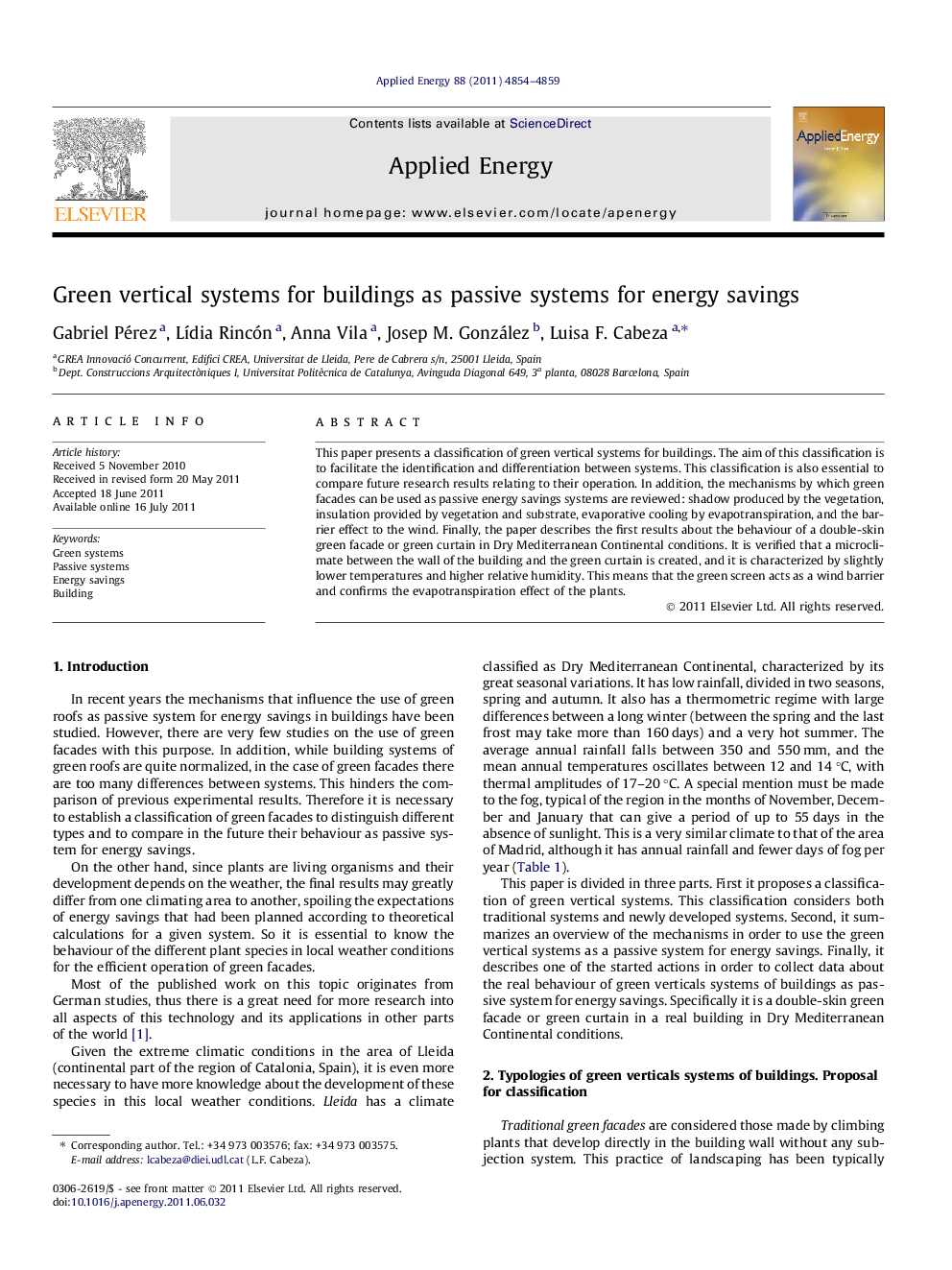| Article ID | Journal | Published Year | Pages | File Type |
|---|---|---|---|---|
| 244008 | Applied Energy | 2011 | 6 Pages |
This paper presents a classification of green vertical systems for buildings. The aim of this classification is to facilitate the identification and differentiation between systems. This classification is also essential to compare future research results relating to their operation. In addition, the mechanisms by which green facades can be used as passive energy savings systems are reviewed: shadow produced by the vegetation, insulation provided by vegetation and substrate, evaporative cooling by evapotranspiration, and the barrier effect to the wind. Finally, the paper describes the first results about the behaviour of a double-skin green facade or green curtain in Dry Mediterranean Continental conditions. It is verified that a microclimate between the wall of the building and the green curtain is created, and it is characterized by slightly lower temperatures and higher relative humidity. This means that the green screen acts as a wind barrier and confirms the evapotranspiration effect of the plants.
► A classification of green vertical systems for buildings is presented. ► Mechanisms to use green facades as passive energy savings systems are reviewed. ► First experimental results are presented. ► They verify that a microclimate between the wall and the green curtain is created.
